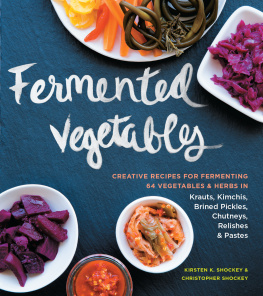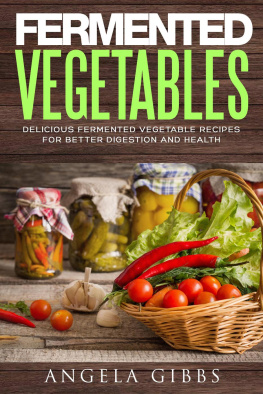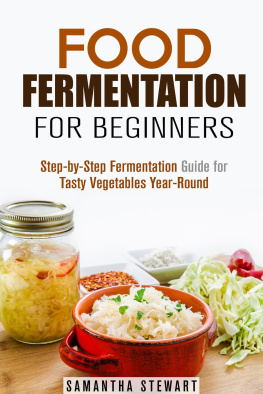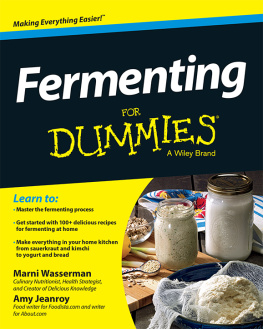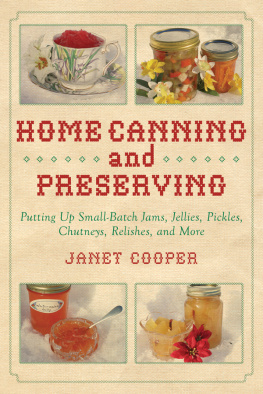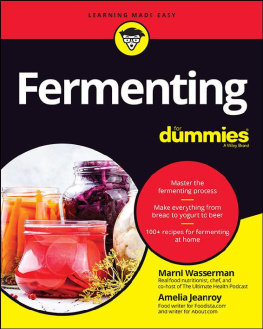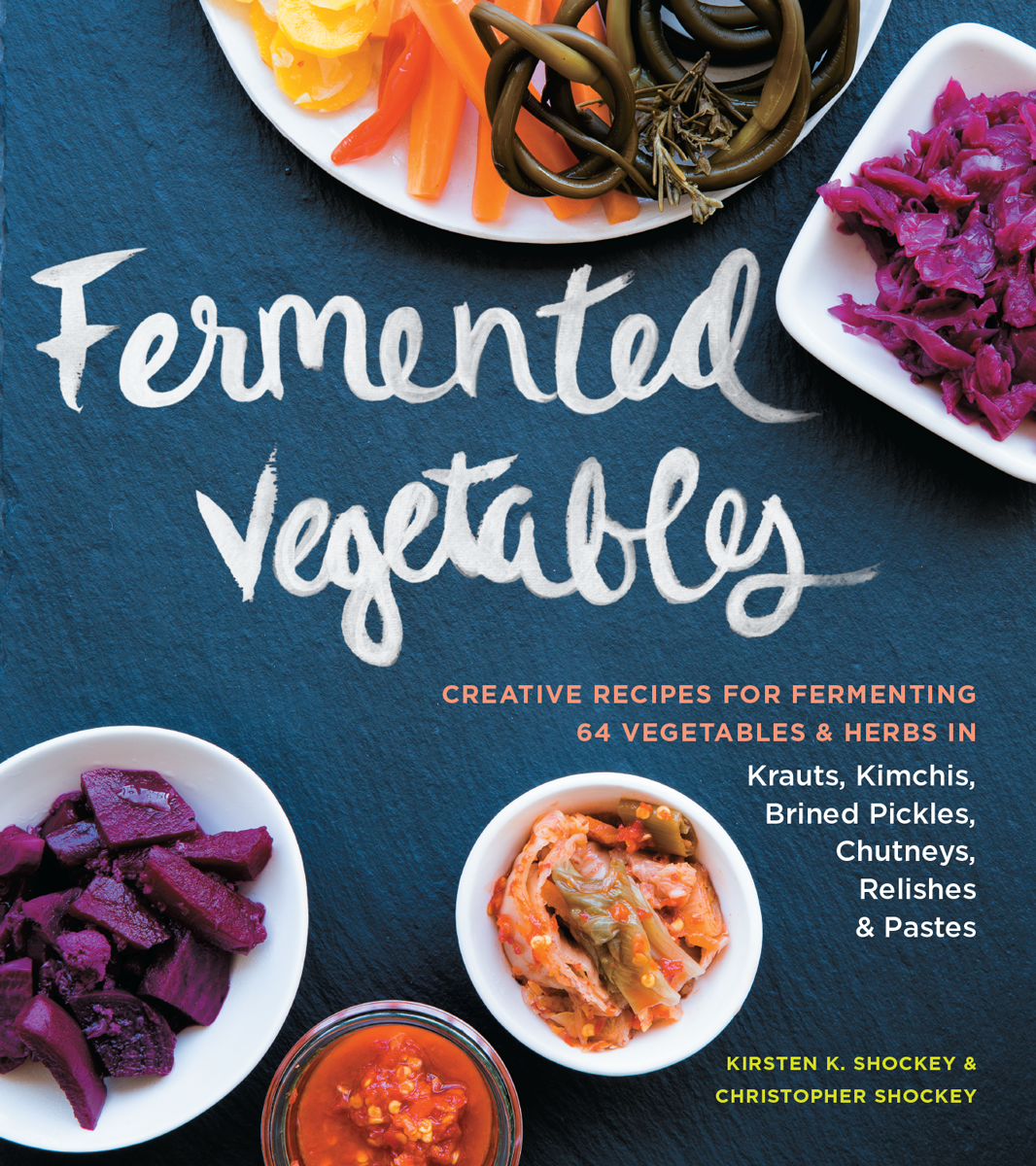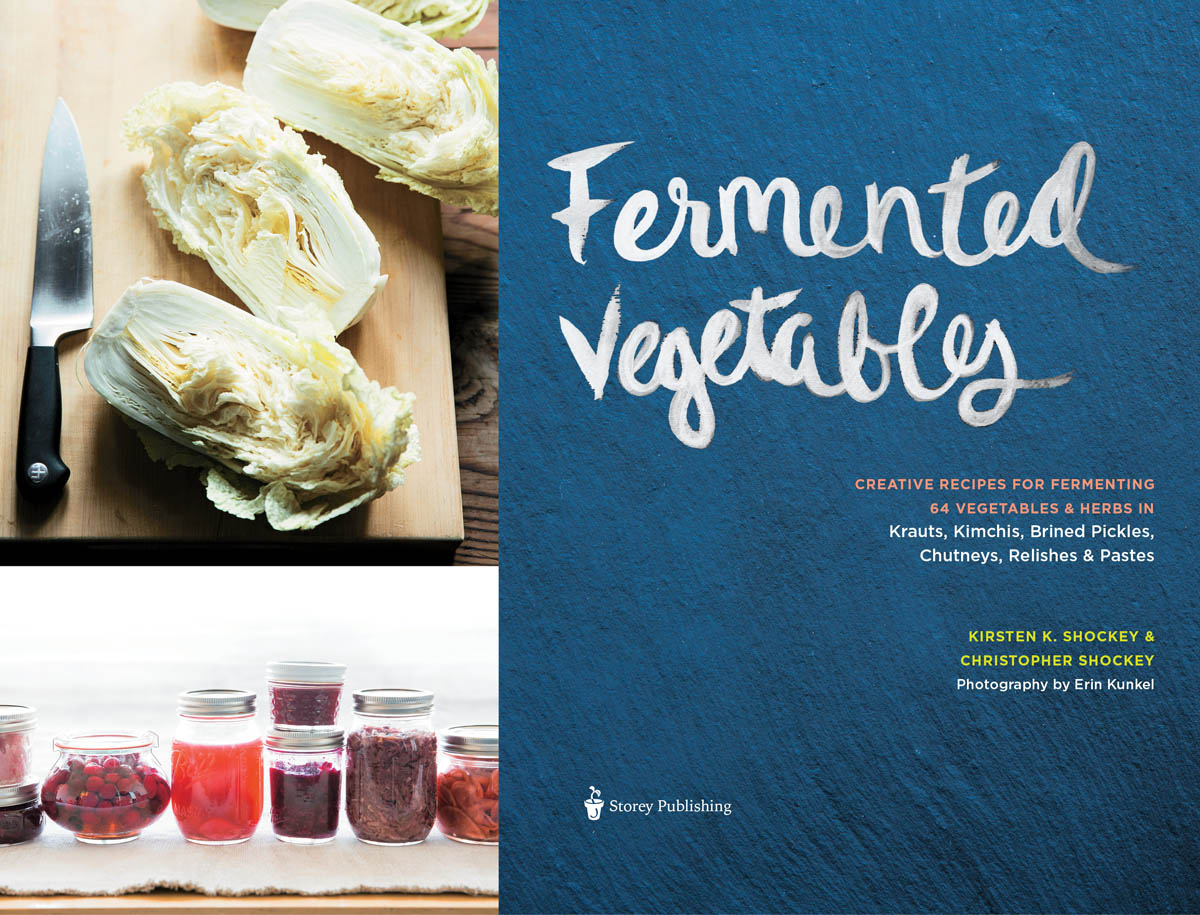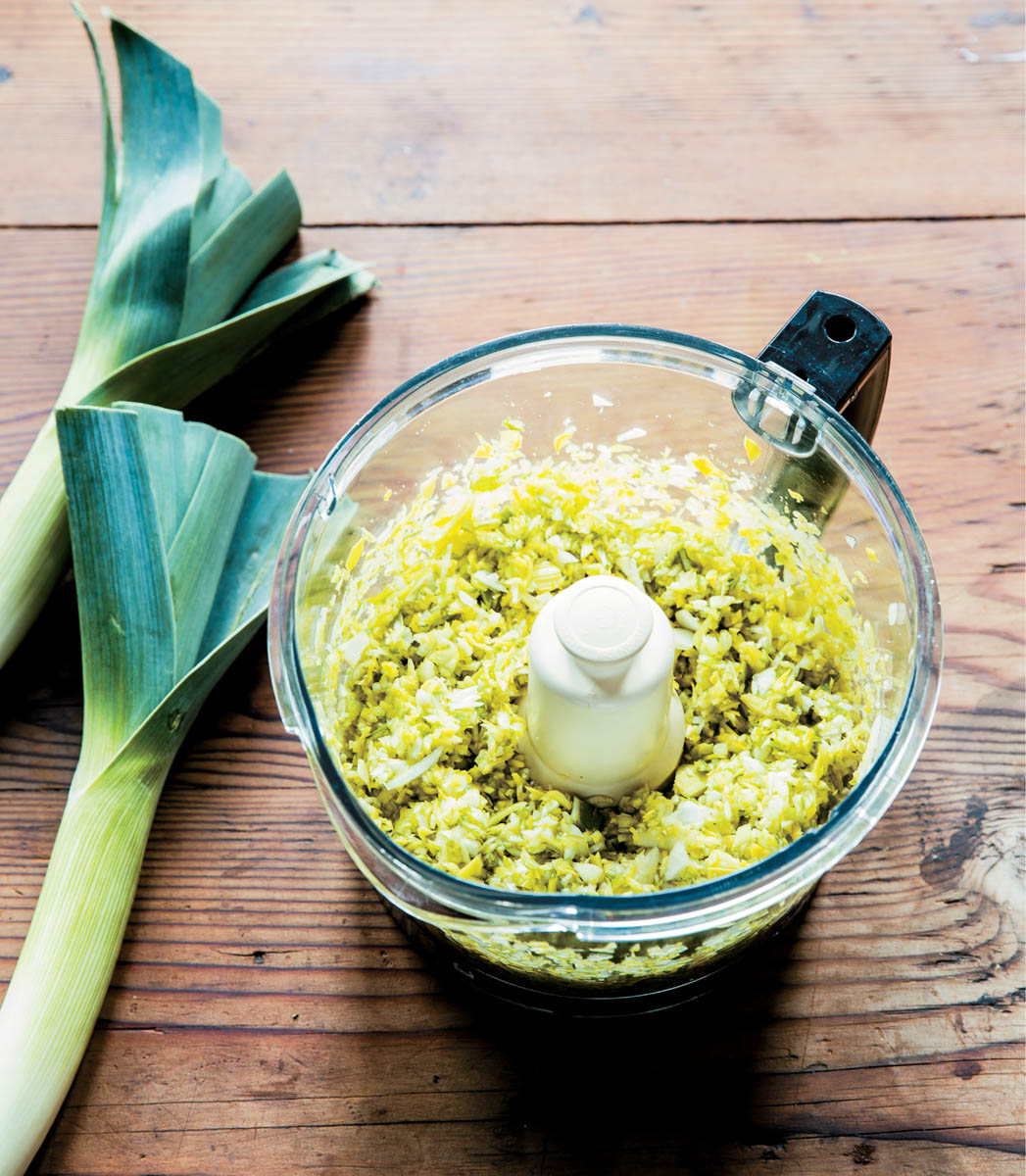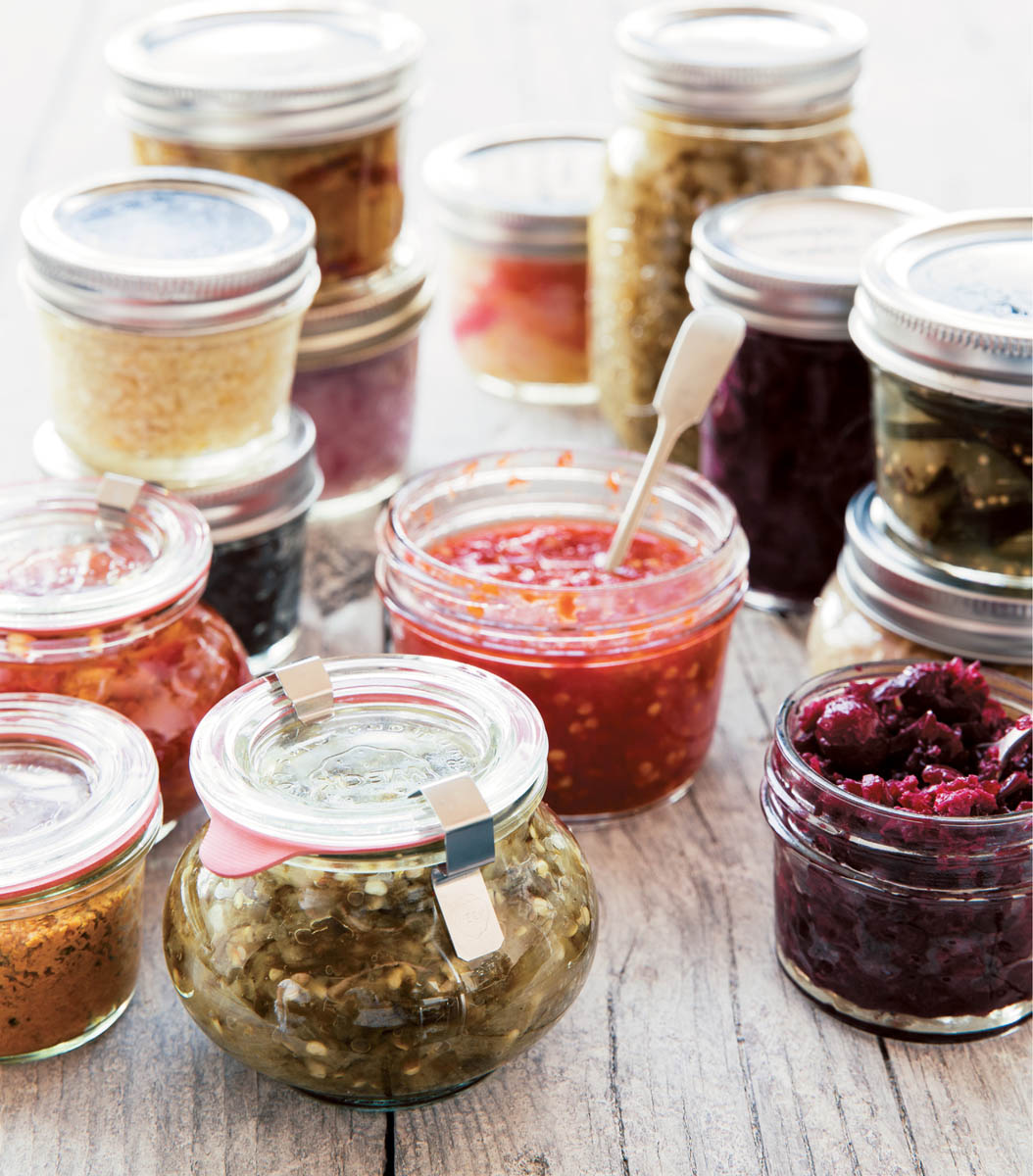Here, try this, wed say as we thrust some new creation at our sometimes-skeptical children on the other side of the fork. It became habit for them, just something they did in our house with two fermentistas on the loose. Now and then theyd ask, hopefully, if we were ready to move on to become bakers or chocolatiers. Still, they always opened up and gave us their honest assessment and support.
Thank you, Jakob, Kelton, Dmitri, and Ariana.
Love, Mom & Pop
Contents
Why We Ferment
Every artist was first an amateur.
Ralph Waldo Emerson
Theres more to fermented vegetables than probiotics, nutrient density, and food preservation. These three attributes are piquing peoples interest, but to be honest, thats not enough. Just because you know something is good for you doesnt mean youre going to eat it. You have to want to eat fermented vegetables, to crave them, and the reason you will is flavor. Youll eat fermented vegetables because you want to, not because you should. Availability and ease of preparation are important, but incorporating fermented foods into your diet is, we believe, all about taste.
By fermenting, youll unlock new, unimagined, complex, deep flavors. Youll experience the unique flavor that comes from time and place with each delicious batch.
We also know that no matter how delicious something is, if its not easy to prepare at the end of a busy day, it wont make it to the dinner table. Thats where fermentation comes in: You can make delicious, nutrient-dense fermented vegetables whenever you have the time. Later, when there are no fresh veggies in the crisper drawer, or you dont have the time to cook up something quick, youll have instant side dishes, salads, or flavorful foods around which to build a meal. Fermented vegetables are the ultimate convenience food!
We were introduced to the Nourishing Traditions cookbook and the Weston A. Price Foundation on Christmas Eve in 1999, with an unusual gift from Kirstens mother. This cookbook and the foundation marked the beginning of a growing interest in traditional foods such as whole raw milk, real butter, and fermented foods. That evening wed eaten weisswurst and potato salad, a holiday tradition from Kirstens Bavarian father. We were seated around the candlelit tree, passing around simple gifts, when Kirstens mother handed us Sally Fallons cookbook and a heavy box. Be careful; keep it upright, she said, smiling. We opened the box to a crock full of bubbling fermenting cabbage. Despite her German heritage, Kirsten was a bit surprised. The fragrance soon overcame the pine scent of the tree, and the childrens faces, lit by the candles, exhibited concern.
Little did we know that this was the beginning of our fermentation journey.
Five years later our homestead in southern Oregon was humming along. By then we were making our own cheeses and yogurts from the milk of our cows and goats. Our fruit trees produced enough apples, plums, and pears for long nights of canning preserves for our four children, who seemed to inhale jam. Christopher sometimes squirreled away enough fruit to make fermented libations, which helped to soothe the long hours. We were not, however, making more than simple sauerkraut.
Then Wild Fermentation, by Sandor Katz, arrived in the mail. We began to try different vegetables, and soon our fermentation equipment had grown from that Christmas crock to six Harsch crocks, all almost always packed with something from our kitchen garden or the farmers market. This period centered on making nutritious, flavorful foods for our growing family.
In 2009, we were searching for a way for the farm to pay for itself. Although wed been making cheese, bread, and cider for years, our valley was blessed with many other producers of those foodstuffs. We decided to produce interesting ferments, ones that highlighted locally grown foods and would inspire people to eat fermented vegetables daily. The beauty of the fermentation process lies in its ancient simplicity we were able to start with very little capital compared to most small businesses.
Two years later we had a USDA-certified kitchen with two fermenting rooms built into the hillside along with five sinks, an 80-quart stainless steel bowl on wheels, a dozen 10-gallon ceramic crocks, a bunch of knives, and two large, noisy commercial refrigerators. We quickly built a loyal customer base through farmers markets, demonstrations, classes, and selling our product in some local grocery stores, restaurants, and regional charcuteries. By all measures we were successful, a small but growing solar-powered farmstead business, sourcing local organic vegetables and producing food people loved.
That first year we developed close relationships with local farmers and experimented with making seasonal combinations. The phone would ring: We have an abundance of garlic scapes. Can you do anything with them? Usually the answer was, Hmm, we can try. By the end of the season wed produced 52 varieties of fermented vegetables that surprised and delighted our customers. Each week at the farmers market, people were eager to discover what new flavor had emerged from the fermentation cave. It was so much fun...
Food processing became an important word combination to us. To move to the next level of success, we needed to standardize the food part and optimize the processing part.
The second fall, when the farmers market ended and we began to focus on our commercial accounts, reality hit us: Grocery stores and restaurants wanted just a few consistent, inexpensive products. We started working through our production processes, looking for ways we could cut labor costs through automation. The rotary slicer that Christopher had mastered would need to be replaced with a monster food processor, capable of swallowing many whole cabbages per minute. We still needed a walk-in cooler to maximize preservation of the harvest.
The issues of scale, efficiency, and profitability pose quandaries for every small business. We thought there was something critical missing in this projected future the artist. Our passion lies in the artistry, the attention to each individual flavor, the experimentation, and the discovery of tastes and colors that arise from concoctions that are put in the crock by either necessity or serendipity. One day we looked at each other and realized we couldnt continue down this commercial road.
We had, by this time, learned a lot about fermenting, and also a lot about what people look for in this artisan category of food. We decided to write a book to help you answer the three big questions we heard in our classes, at demo tables, and at our farmers market stand:
What are the secrets to making a great batch?
Which veggies play well together in the crock, and which just shouldnt be fermented?
Because probiotic foods are so good for us, how can we enjoy them with every meal?
Fermenting vegetables is simple once you know the tricks. We believe that all of us should be making our own krauts and pickles and condiments.
About the Book
In , Dipping into the Brine: Fermentation Fundamentals, youll learn the scientific nuts and bolts of fermentation. Youll read about whats happening under the brine and why this salty liquid is essential. There is a discussion on salt, which is really the only ingredient youll need other than vegetables. Well share some thoughts on fermentation as preservation and introduce you to the tools of the trade.

